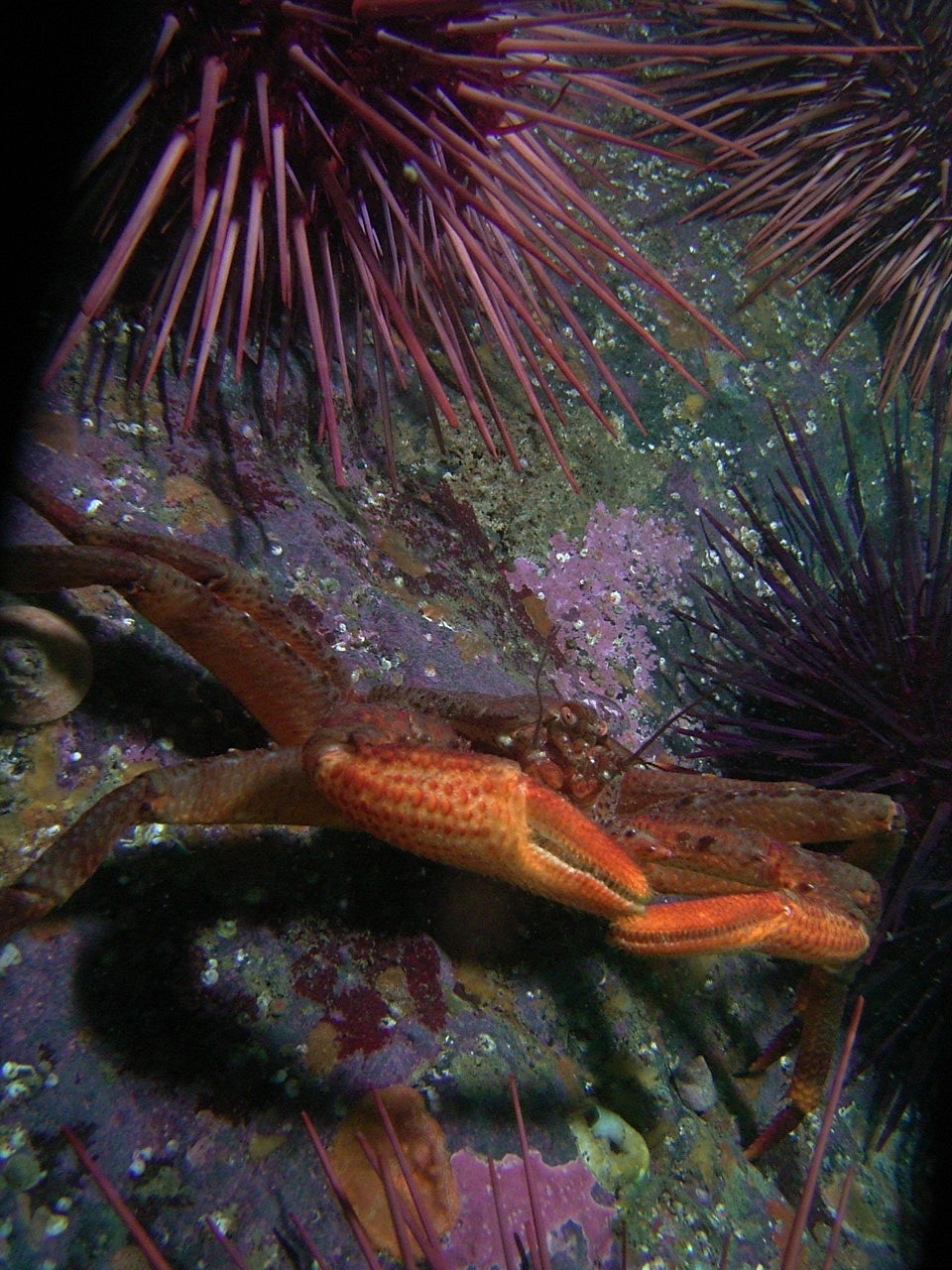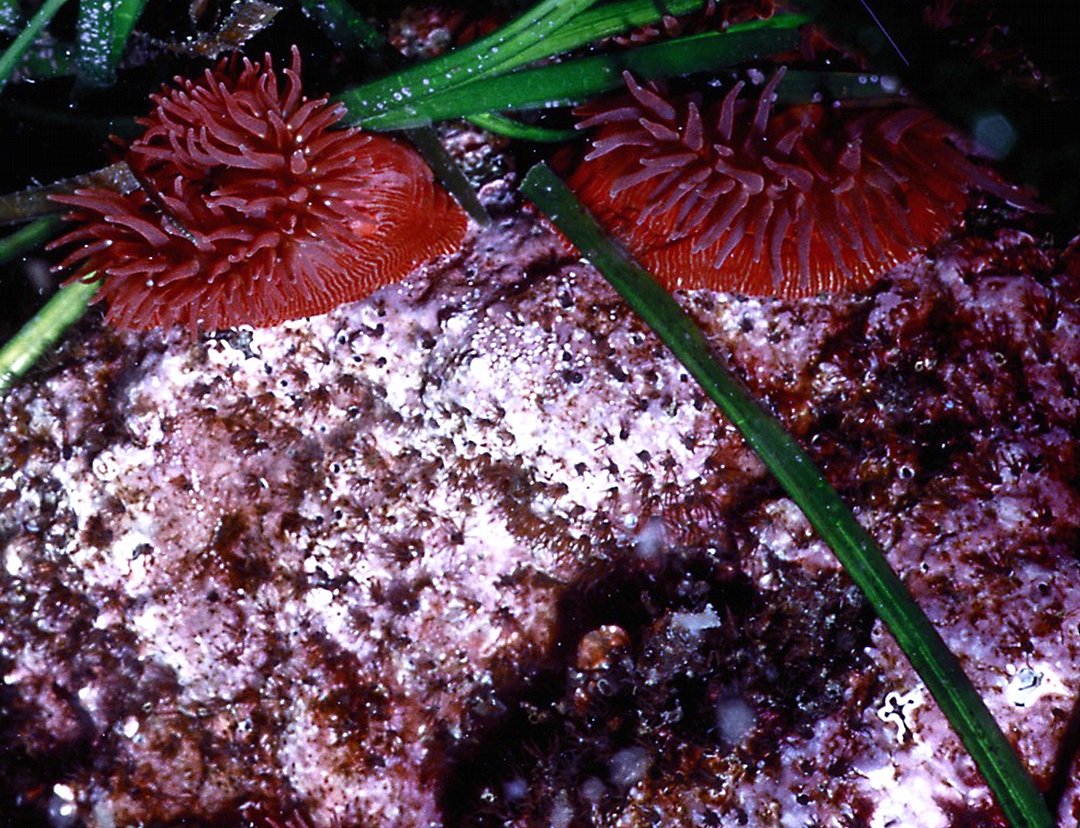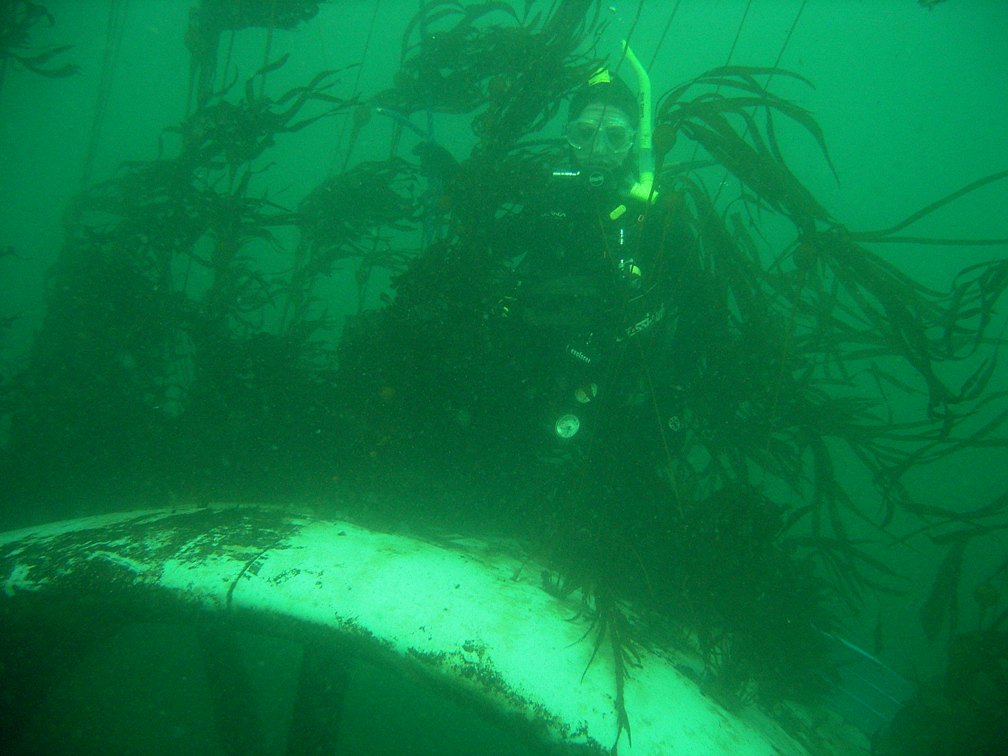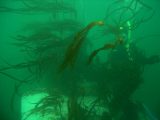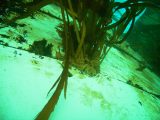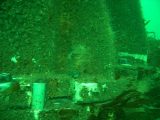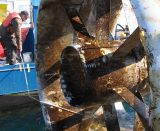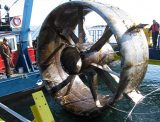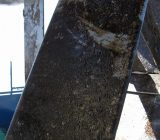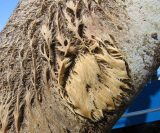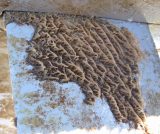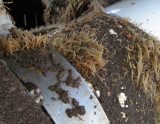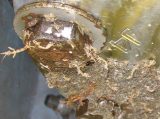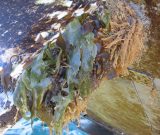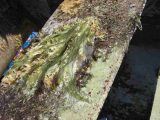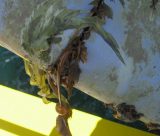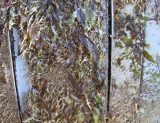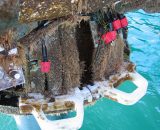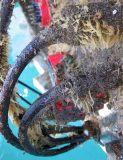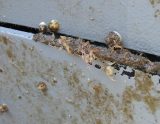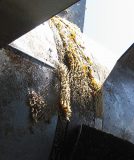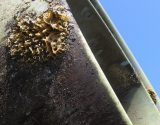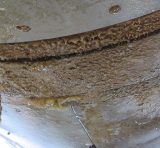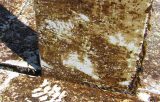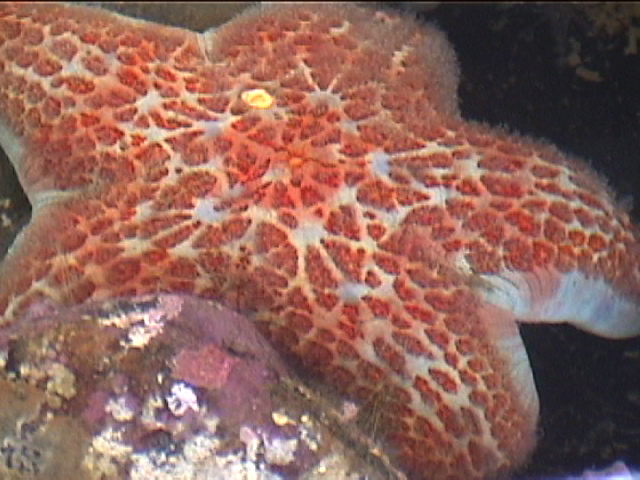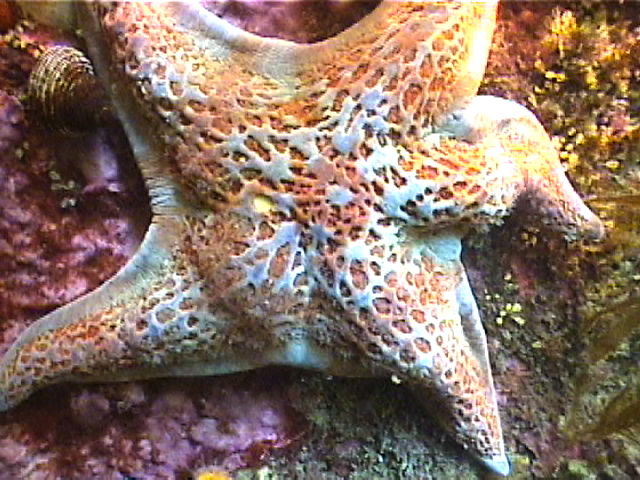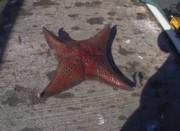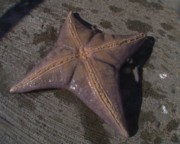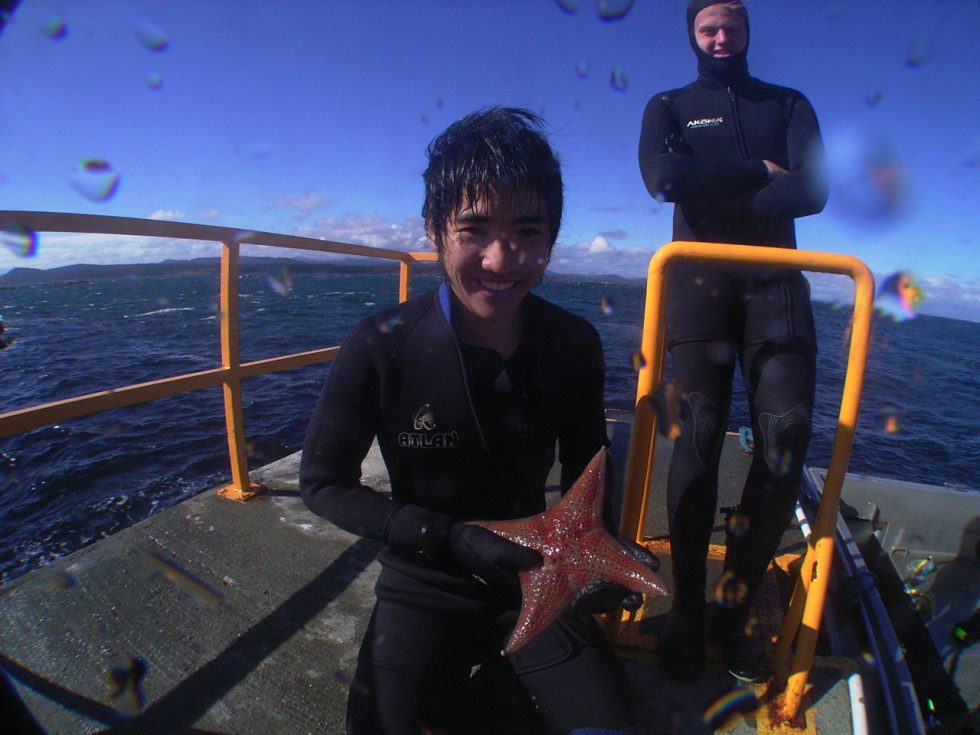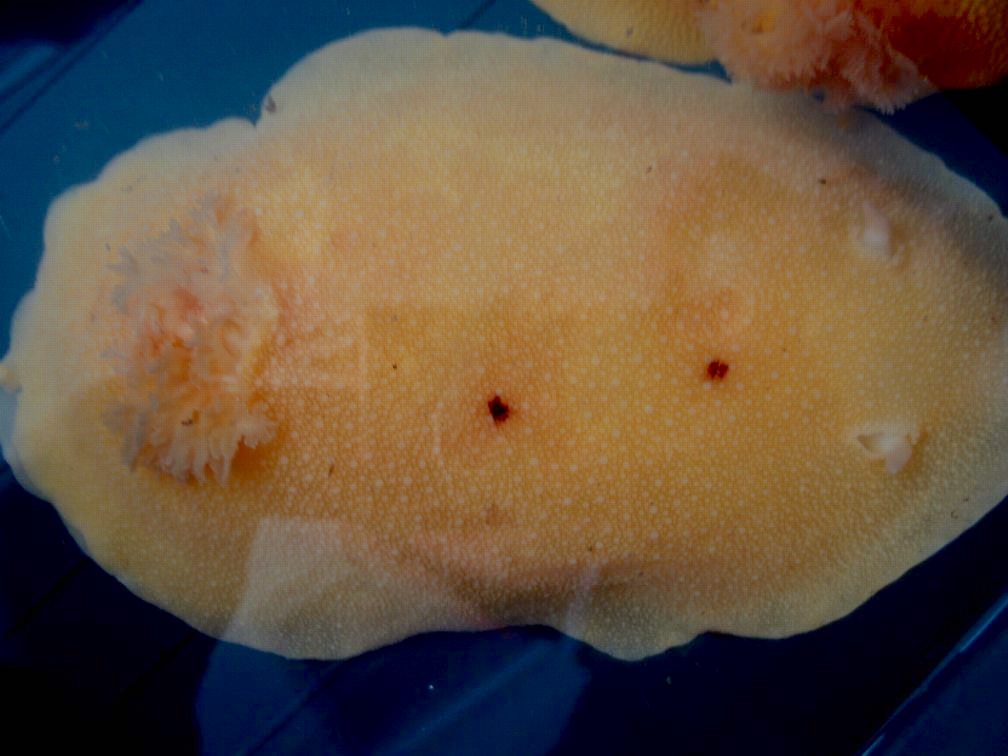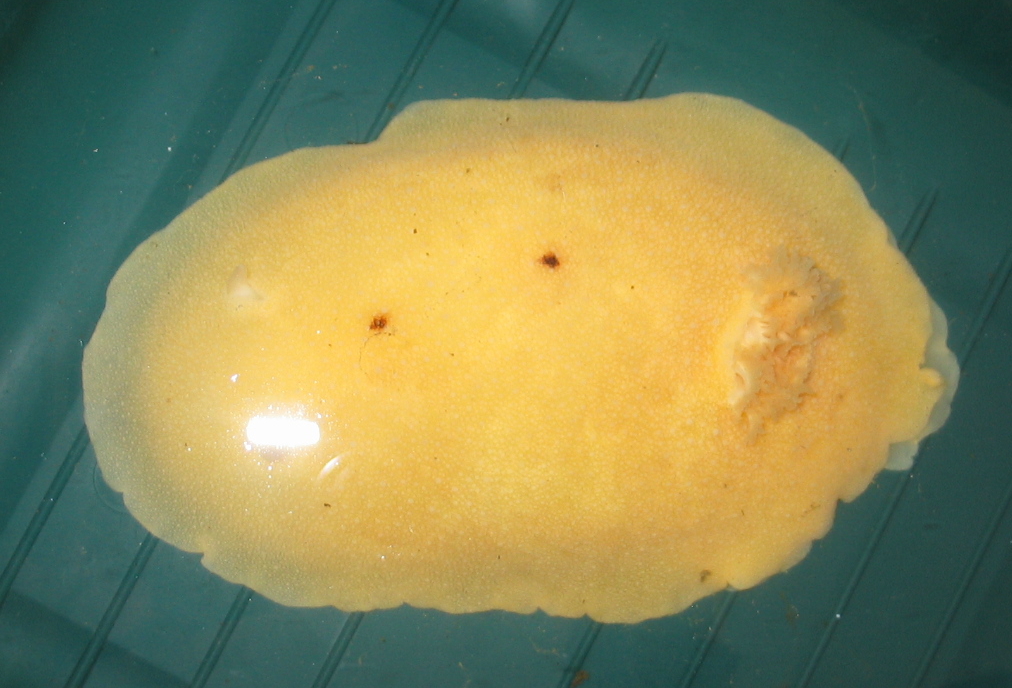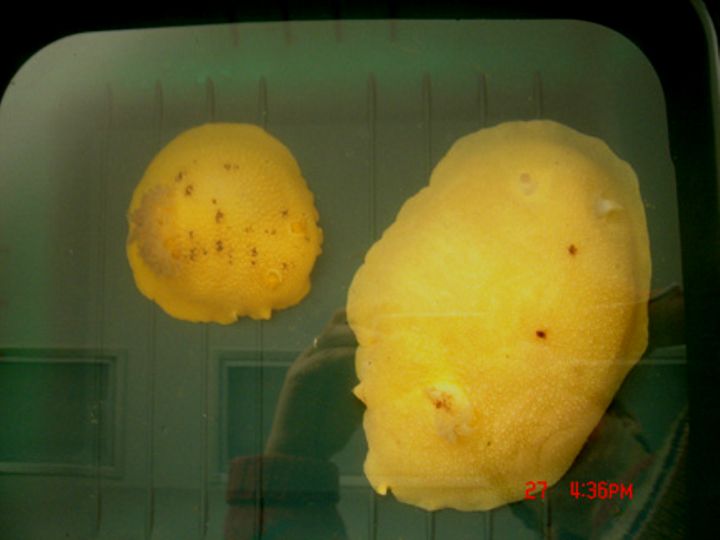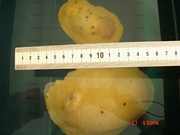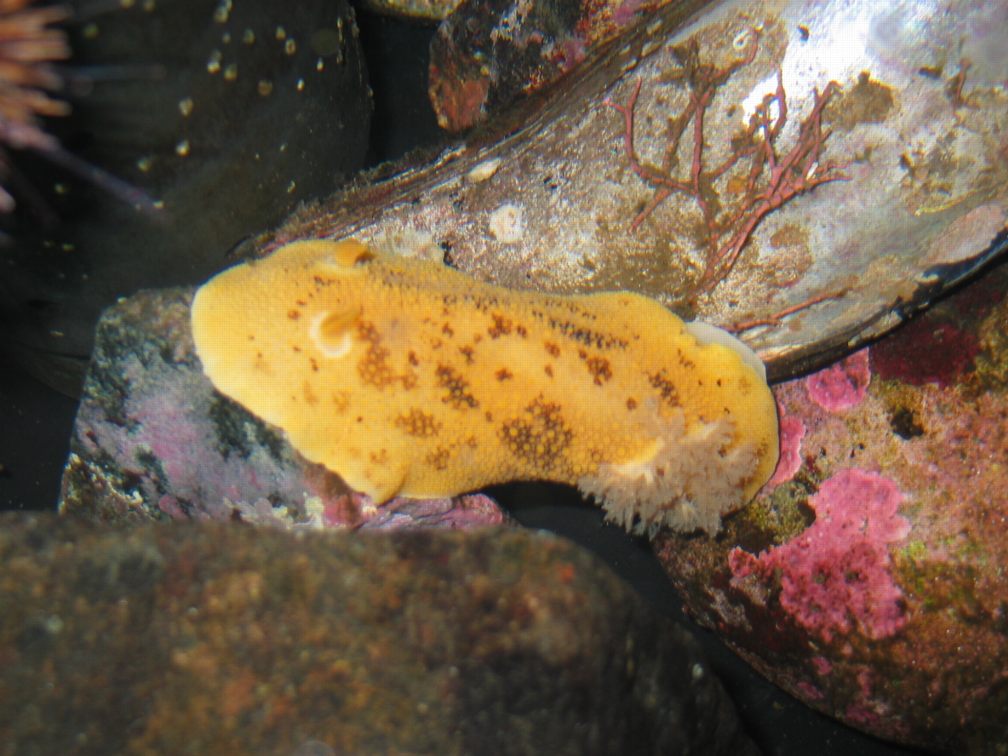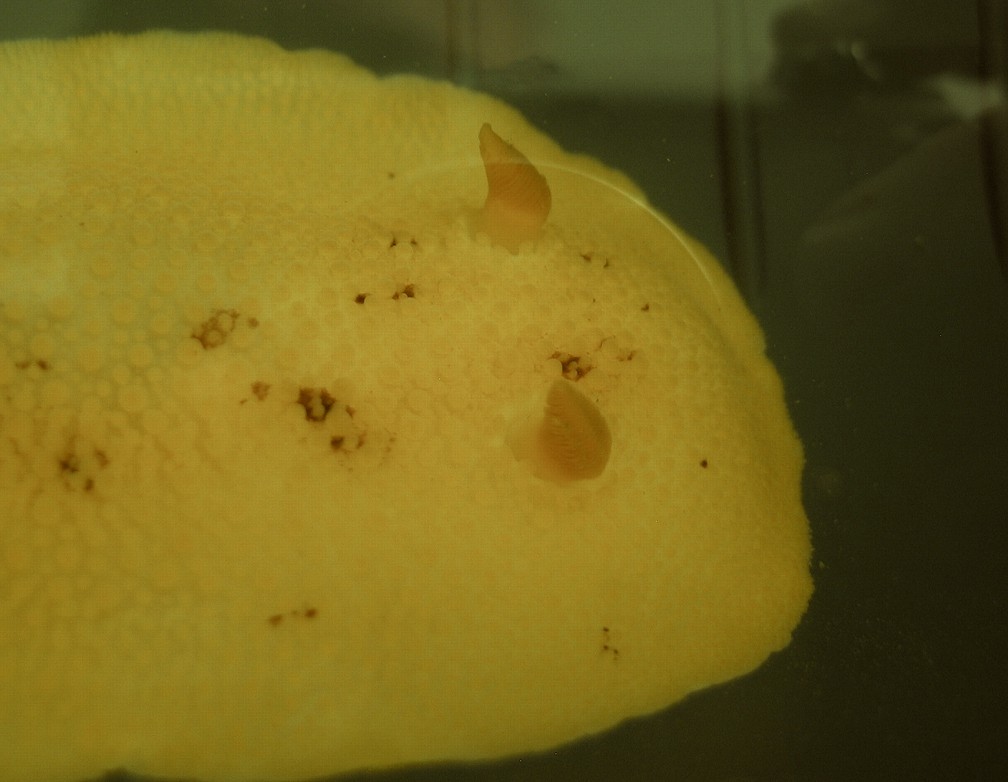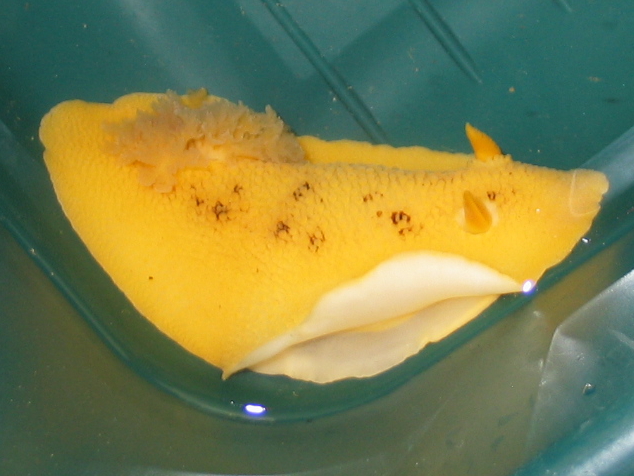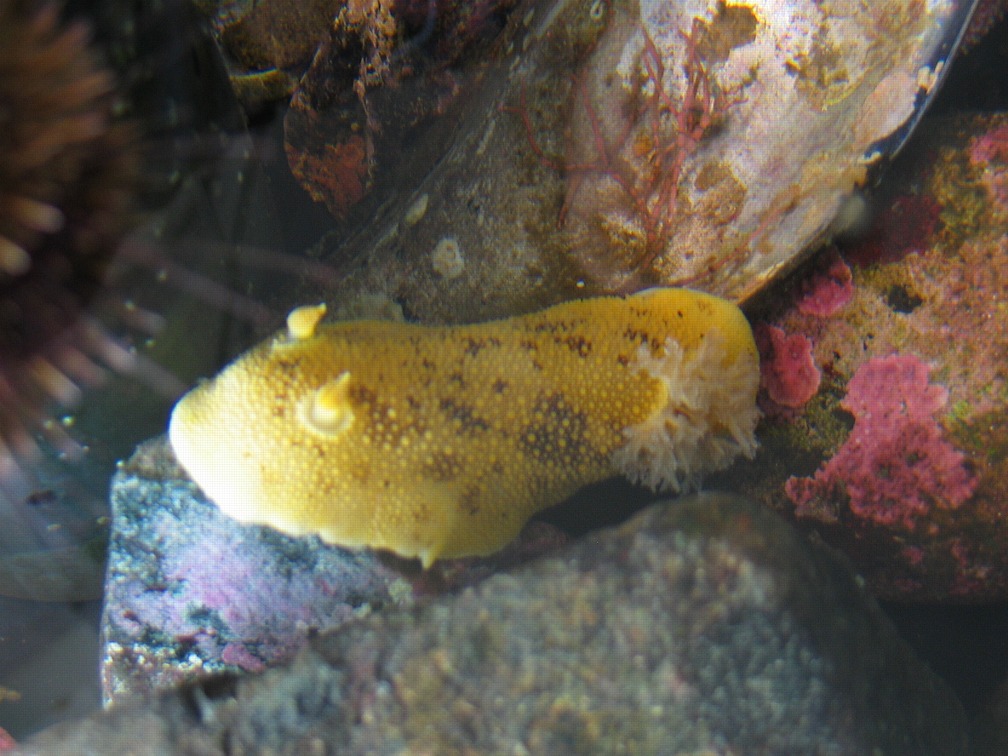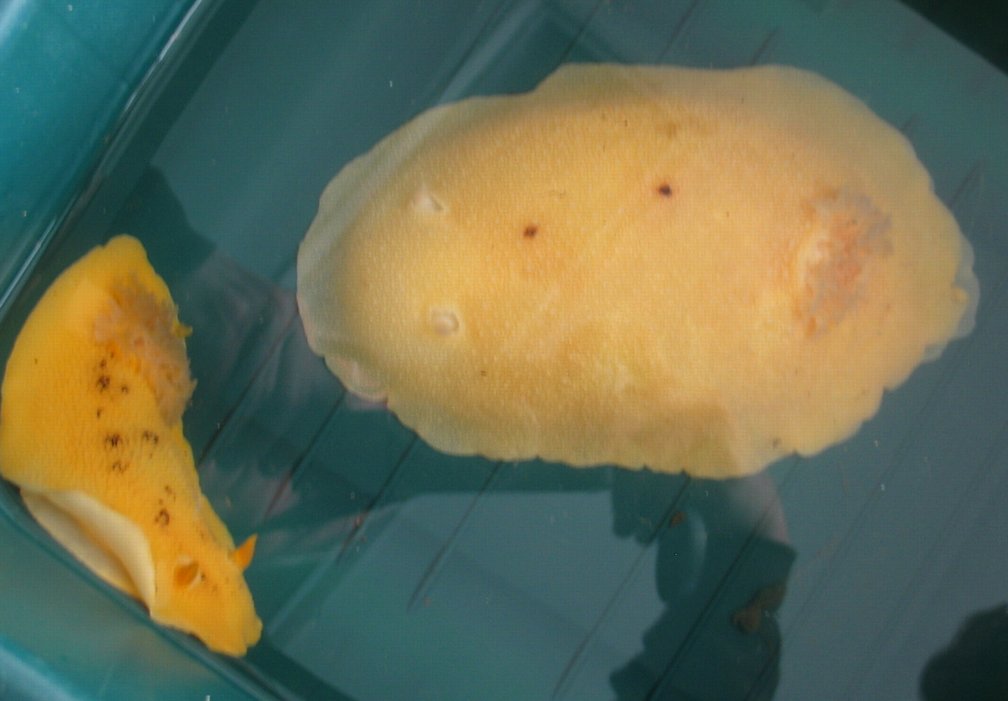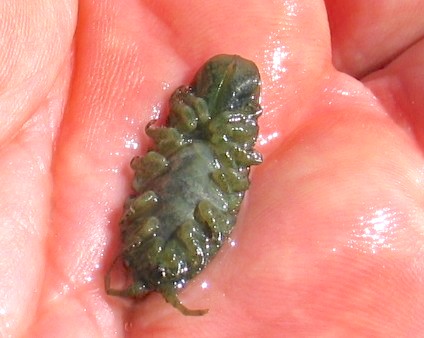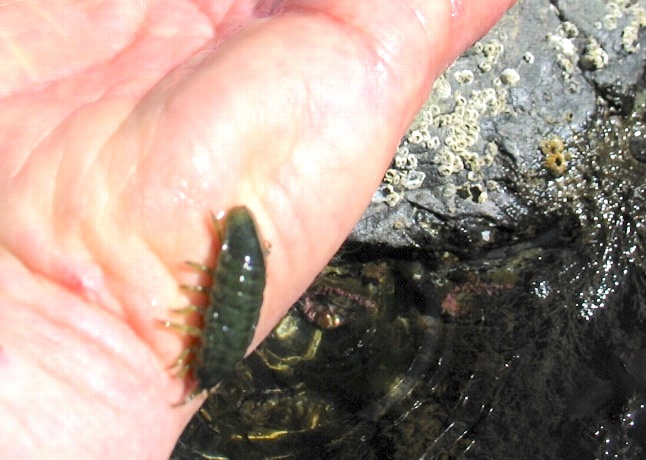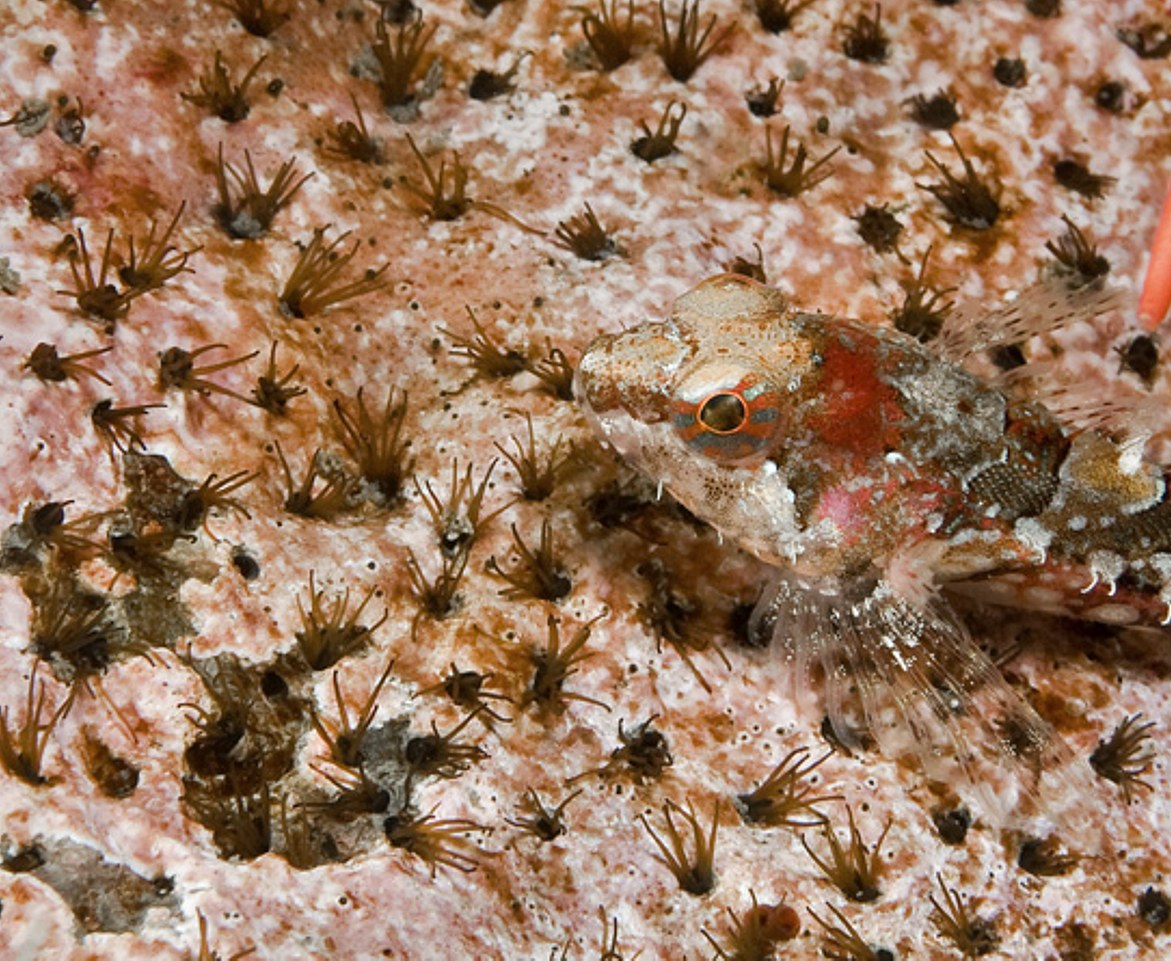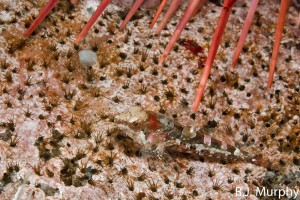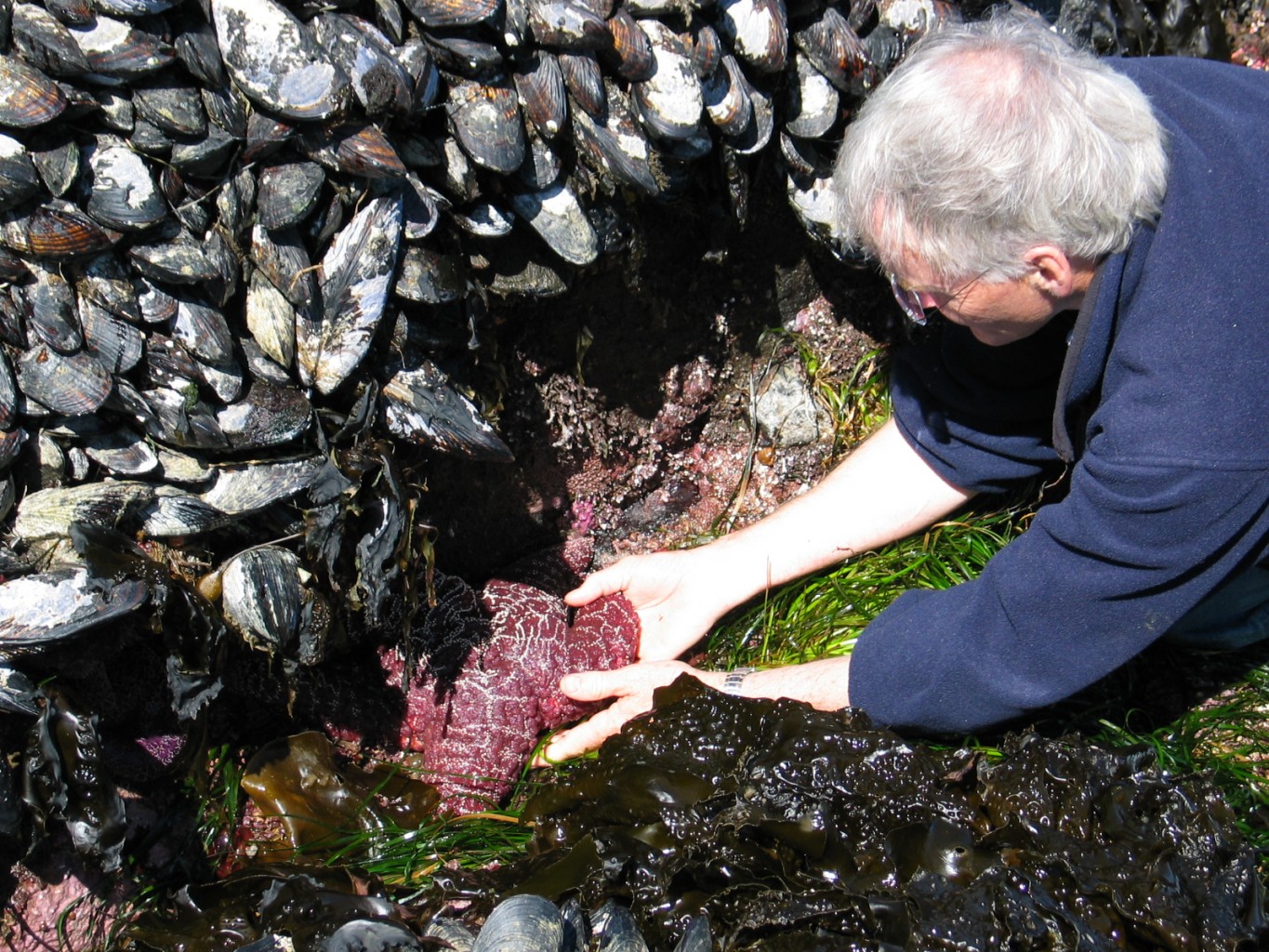 West Coast Wildlife Adventures approached to view the elephant seal also within 10 meters of the seal. I advised him he was too close since slash was there basking in the water. He had moved in to get a close look from a few metres. Images were placed on ecotourism page on web.
West Coast Wildlife Adventures approached to view the elephant seal also within 10 meters of the seal. I advised him he was too close since slash was there basking in the water. He had moved in to get a close look from a few metres. Images were placed on ecotourism page on web.
I found another black oystercatcher nest down in front of the Winch House, so moved camera3 over to it. (Update note on July 17–2 young were observed near the nest). In the morning I went out on the intertidal for the minus tide. Excellent long exposure of the surge channel and the cave on the South west side. Also got onto Anita’s intertidal island down from the helipad. I was looking for the large ( 45 cm diameter Purple star. Which I saw there two years ago, and at that time I thought he was the only one on the island. This time I found another smaller one– 30 cm diameter in a similar protected channel only 2 metres from the other one. Since these sea stars inhabit the lower intertidal zone, they cannot withstand the heavy wave action that occurs in that area without these deep channels which are protected by a rise on the seaward side to the west. As far as I know these are the only two purple stars occurring at Race Rocks. They are very common however in other sheltered inland coastlines in BC and are frequently the first sea star that visitors to BC shores notice. I also made note of a large number of very colourful brooding anemone exposed on the same protected mussel-covered wall on that island. There was an unusual abundance of blue ones which I remember to be rather rare when seen by diving in that area previously . One gull nest close to the science centre has chicks hatching.
Category Archives: Invertebrate
Placetron wosnessenskii: Scaled Crab–The race Rocks taxonomy
We are awaiting positive identification on this one as we do not see these often while diving at Race Rocks. This photo was by Pearson College Divers in the spring of 2007,
spring, 2007
Domain Eukarya
Kingdom Animalia
Phylum Arthropoda
Class Malocostrac
Subclass Eumalacostraca
Superorder Eucarida
Order Decapoda
Suborder Pleocyematya
Infraorder Anomura
Superfamily Paguroidea
Family Lithodidae
Genus Placetron
Species wosnessenskii
Schalfeew,1892
Common Name: Scaled Crab
| Other Members of the Phylum Arthropoda at Race Rocks |
and Image File |
 The Race Rocks taxonomy is a collaborative venture originally started with the Biology and Environmental Systems students of Lester Pearson College UWC. It now also has contributions added by Faculty, Staff, Volunteers and Observers on the remote control webcams. The Race Rocks taxonomy is a collaborative venture originally started with the Biology and Environmental Systems students of Lester Pearson College UWC. It now also has contributions added by Faculty, Staff, Volunteers and Observers on the remote control webcams.
2007 (PC) |
Dodecaceria concharum: coralline fringed tube worm–The Race Rocks Taxonomy
Typically, this Terebellid tube worm appears as a slight fuzz on the surface of the pink lithothamnion or on the hydrocorals.
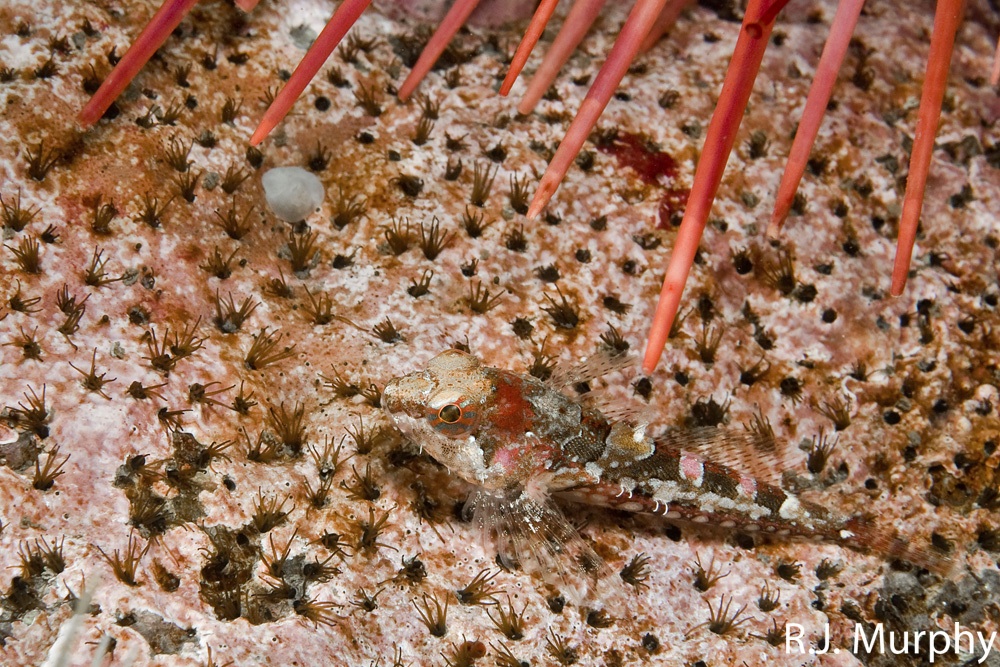
Taken in 2009 by Ryan Murphy off the North side of Great Race Rock. Note the sculpin with cryptic colouration.
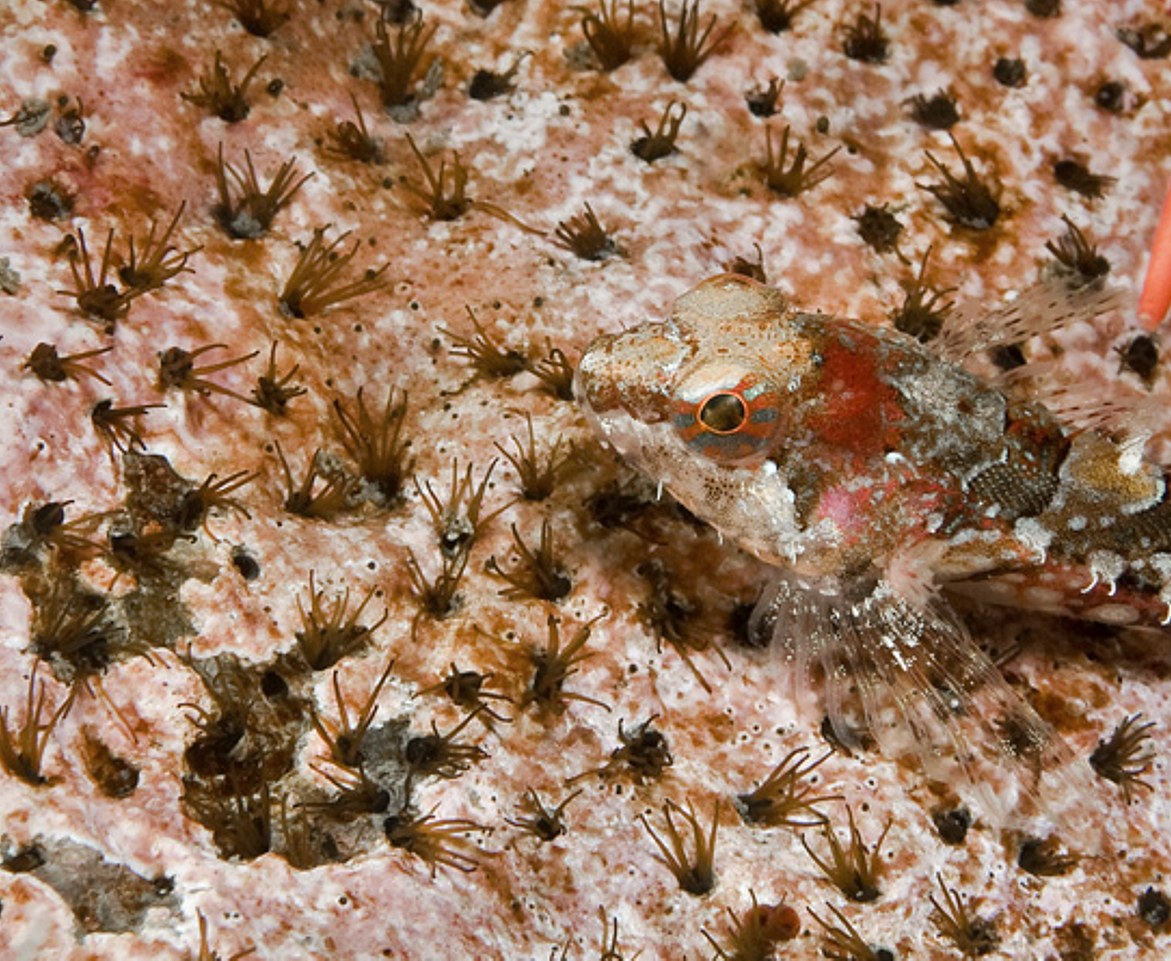
A close up view of a colony of Dodecaceria concharum emerging from Lithothamnion. On the left is the cryptically coloured sculpin that takes advantage of the background for blending in. Photo by Ryan Murphy.
Domain: Eukarya
Kingdom: Animalia
Phylum: Annelida
Class: Polychaeta
Subclass: Palpata
Order: Canalipalpata
Suborder: Terebellida
Family: Cirratulidae
Genus: Dodecaceria
Species: concharum (Oerstad,1851)
Common Name: coralline fringed tube worm
Other Annelids at Race Rocks
 The Race Rocks taxonomy is a collaborative venture originally started with the Biology and Environmental Systems students of Lester Pearson College UWC. It now also has contributions added by Faculty, Staff, Volunteers and Observers on the remote control webcams. Garry Fletcher, 2006 The Race Rocks taxonomy is a collaborative venture originally started with the Biology and Environmental Systems students of Lester Pearson College UWC. It now also has contributions added by Faculty, Staff, Volunteers and Observers on the remote control webcams. Garry Fletcher, 2006 |
6-Month Fouling Records on Tidal Energy Turbine
A week before raising the turbine in April 2007, the outer Nereocystis, or Bull kelp growth was removed by the Pearson College Divers. Since the top of the turbine is in a water depth averaging 10 metres it is shallow enough for the brown Macroalgae to take foothold and within a few weeks it would have reached the surface. This algae can atttach to a solid substrate within the top 12 metres of water at Race Rocks.
- Unicode
- The kelp holdfasts were attached to the outer cowling on irregularities on the surface.Unicode
- A felt-like growth of algae and hydroids has already covered the flange below the turbine.
- It gave us an opportunity to examine the distribution of the species and level of growth of the fouling organisms.
- In April, 2007, the turbine was pulled up for inspection and possible refit of bearings.
- It also provided evidence of which materials are best in repelling growth
- Many areas were completely covered with encrustations of diatoms or hydroids. This is one of the blades of the turbine.
- encrustations of diatoms or hydroids. This is one of the blades of the turbine. A scrape on the blade shows the thickness of the diatoms
- These hydroids are likely the species Plumularia lagenifera
- All hydroids were of the order Leptothecatae with no Anthoathecatae observable.
- As in other instances we have experienced when there was long term deployment of instruments at Race Rocks, colonies of skeleton shrimp, shown here, cover some surfaces, and cling to the hydroid colonies.
- deployment of instruments at Race Rocks, colonies of skeleton shrimp, shown here, cover some surfaces, and cling to the hydroid colonies. Skeleton shrimp (Caprella laeviuscula) hang from their rear appendages in this enlarged photo of a bolt head.
- Various species of red and brown algae ( Laminaria sp ) starting to grow, with more skeleton shrimp scattered throughout
- The turbine was too deep for the growth of green algae. These brown algae, Desmarestia sp. were attached to a blade. They appear green since they have been drying out for some time and the acids in the lamina tend to speed deterioration of pigments.
- .A few small bull kelp, (Nereocystis leutkeana) have anchored to the structure. This could provide problems for future entanglement if these kelp thrive on the structure.
- A mixed population of some red and brown algaes.
- In the areas underneath the structure where the cables attach, a good amount of protection is available thus encouraging the attachment of the fouling species.
- A 1 cm diameter barnacle has attached to this part of the structure. Note also skeleton shrimp.
- A 1 cm diameter barnacle has attached to this part of the structure. Note also skeleton shrimp. It demonstrated the problem of having any small crevice or location where organisms could establish a foothold on the structure.
- Hydroid clump on the underside of the cowling.
- Colonial Tunicates, the gelatinous yellow mass along one seam, have started to colonize in this area.
- Diatoms coat many of the exposed surfaces. They are usually the precursor to futire invertebrate growth.
asasa
Dermasterias imbricata: Leather star–The Race Rocks Taxonomy
- In a relaxed individual, the gills appear as a fuzzy covering.
- In the this view from underwater, the leather star does not have the gills deployed so it looks smooth
- The dorsal view of Dermasterias
- Ventral side of the Leather Star
- April, 2007, Kohei and Natan found this unusual 4-legged leather star
- In April, 2007, Kohei and Natan found this unusual 4-legged leather star.
Domain Eukarya
Usually when we find leather stars at Race Rocks, a search in the grooves underneath will reveal a symbiont, the scaleworm Arctonoe vittata. The worm also associates with various other marine invertebrates, but if separated from its host, will search out another member of the same species. The main predator of this sea star is the morning sun star
Kingdom Animalia
Phylum Echinodermata
Class Asteroidea
Order Valvatida
Family ASteropseidae
Genus Dermasterias
Species imbricata. (Dermasterias imbricata )(Grube, 1857)
Common Name: Leather Star
Garry Fletcher
Doris montereyensis : The Race Rocks Taxonomy
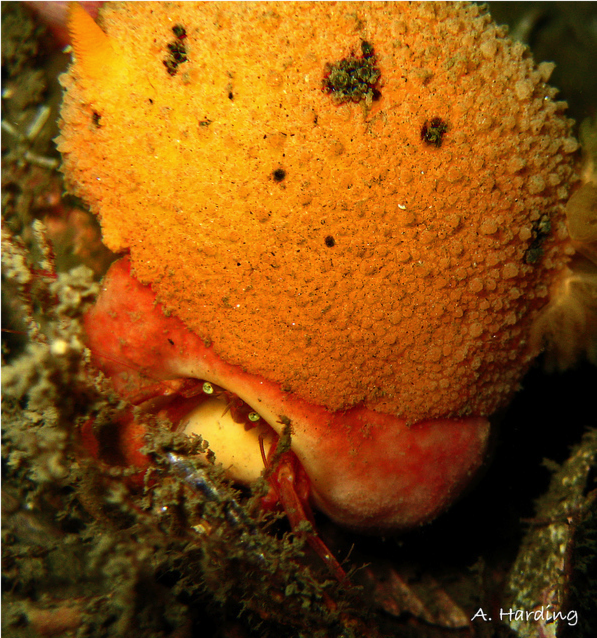
This rather unique image of a sea slug eating a suberites sponge which houses a hermit crab was take by Adam Harding , Sept, 2010
- Doris monteryensis
- Doris monteryensis Doris compared with the Noble Sea Lemon Peltodoris nobilis
- Doris monteryensis Doris compared with the Noble Sea Lemon Peltodoris nobilis
Cyamus kessleri: Gray whale lice–The Race Rocks Taxonomy
Whale lice were removed from the skin of the Gray Whale which was prepared for a skeleton at Lester B. Pearson College. They are currently in the display case beside the mounted whale skeleton.
The lice mainly eat algae that settle on the host’s body. They usually feed off the flaking skin of the whale and frequent wounds or open areas. They cause minor skin damage, which does not lead to illness.
The development of the whale louse is closely connected with the life pattern of whales. The distribution of various lice species reflects migratory patterns.
Domain Eukarya
Kingdom Animalia
Phylum Arthropoda
Subphylum: Crustacea
Class: Malacostraca
Superorder:Peracarida
Order: Amphipoda
Infraorder: Corophiida
Parvorder: Caprellidira
Superfamily: Caprelloidea
Family: Cyamidae
Genus Cyamus
Species kessleri
Common Name: Gray Whale Lice
Reference: from https://journeynorth.org/tm/gwhale/Hitchhikers.html
“Whale lice are another type of whale hitchhiker. Unlike barnacles, lice are true parasites. They feed on gray whale skin and damaged tissue. The lice gather around open wounds or scars. See Photo.
Whale lice may spread from mother whales to their calves during birth, nursing, or other bodily contact. Up to 1000 of these parasites have been found on a single gray whale.
Luckily for the lice-infested whales, other creatures go after the lice. Topsmelt are silvery fish that school in the breeding lagoons. Normally they feed on marine plants, tiny shrimps and other miniscule creatures of the lagoons. But when the whales are around, the topsmelt dine on the whales. How? Schools of these small fish pick at the barnacles and whale lice crusting up a whale’s skin. Topsmelt groom whales in the calving lagoons. By ridding the whales of some of their parasites and old, flaky skin, topsmelt may be helping to cut down the resistance, or drag, that grays create as their huge bodies move through the water. The whales have a smoother ride and the topsmelt groomers get protein-rich food.”
| Other Members of the Phylum Arthropoda at Race Rocks |
and Image File |
 The Race Rocks taxonomy is a collaborative venture originally started with the Biology and Environmental Systems students of Lester Pearson College UWC. It now also has contributions added by Faculty, Staff, Volunteers and Observers on the remote control webcams. The Race Rocks taxonomy is a collaborative venture originally started with the Biology and Environmental Systems students of Lester Pearson College UWC. It now also has contributions added by Faculty, Staff, Volunteers and Observers on the remote control webcams.
December 2006 |
Peltodoris nobilis: Sea Lemon, The Race Rocks taxonomy
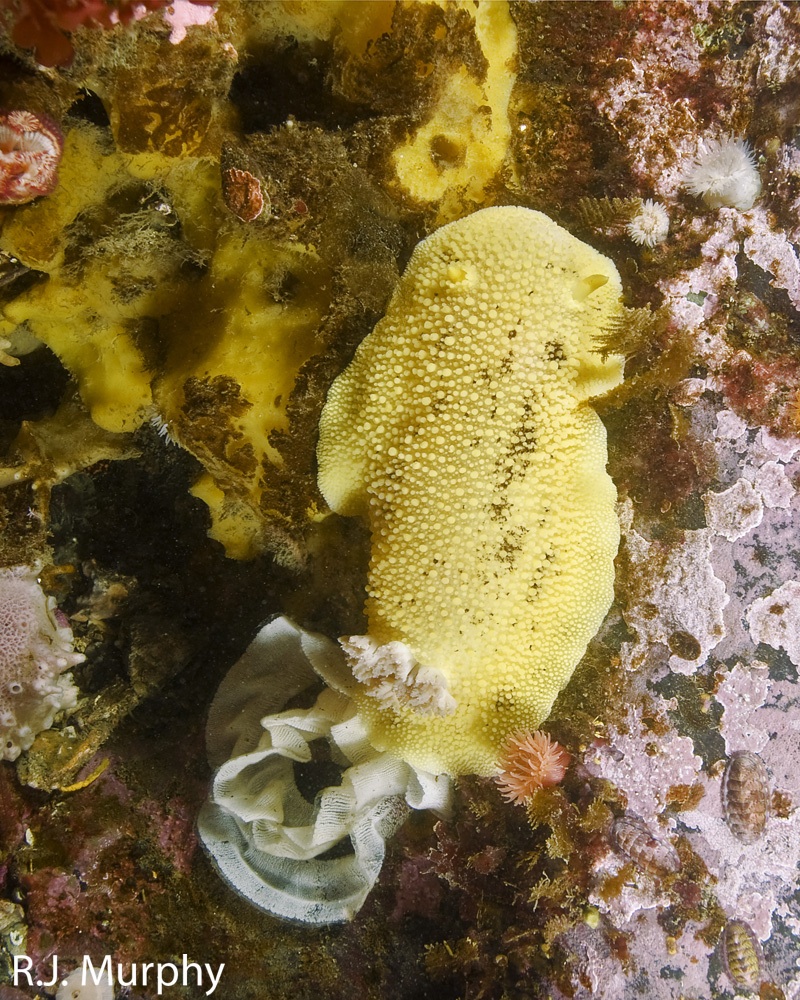
A Sea Lemon that has just laid its eggs. Ryan took this image underwater at Race Rocks in the spring, 2009, it was formerly called Anisodoris nobilis
- Peltodoris in its natural environment
- The rhinophores of Peltotoris
- The Noble Sea Lemon
- The mantle of Peltodori
- Note rhinopores
- Peltodoris compared with the Monterey Sea lemon Doris monteryensis
Domain Eukarya
Kingdom Animalia
Phylum Mollusca
Class Gastropoda
Order Opisthobranchia
Family Nudibranchia
Genus Peltodoris
Species nobilis
Common Name: Sea Lemon
Ryan Murphy
Idotea wosnesenskii: Isopod–The Race Rocks Taxonomy
Other Members of the Phylum Arthropoda at Race Rocks.
and Image File |
 The Race Rocks taxonomy is a collaborative venture originally started with the Biology and Environmental Systems students of Lester Pearson College UWC. It now also has contributions added by Faculty, Staff, Volunteers and Observers on the remote control webcams. This file was originally written by Claudia Aliaga, Chile, Pearson College student , Year 32 -2006 The Race Rocks taxonomy is a collaborative venture originally started with the Biology and Environmental Systems students of Lester Pearson College UWC. It now also has contributions added by Faculty, Staff, Volunteers and Observers on the remote control webcams. This file was originally written by Claudia Aliaga, Chile, Pearson College student , Year 32 -2006 |
Dodecaceria concharum: Coraline-fringed tubeworm–The Race Rocks Taxonomy
Below is a close up view of a colony of Dodecaceria concharum emerging from Lithothamnion. On the left is a cryptically coloured sculpin that takes advantage of the background for blending in. See the complete picture below.
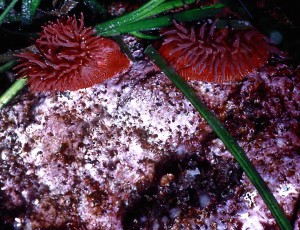
Photo by Dr.A. Svoboda Typically, this Terebellid tube worm appears as a slight fuzz on the surface of the pink lithothamnion or on the hydrocorals.
| Domain | Eukarya |
| Kingdom | Animalia |
| Phylum | Annelida |
| Class | Polychaeta |
| Subclass | Palpata |
| Order | Canalipalpata |
| Suborder | Terebellida |
| Family | Cirratulidae |
| Genus | Dodecaceria |
| Species | concharum (Oerstad,1851) |
| Common Name: | coralline fringed tube worm |
|
